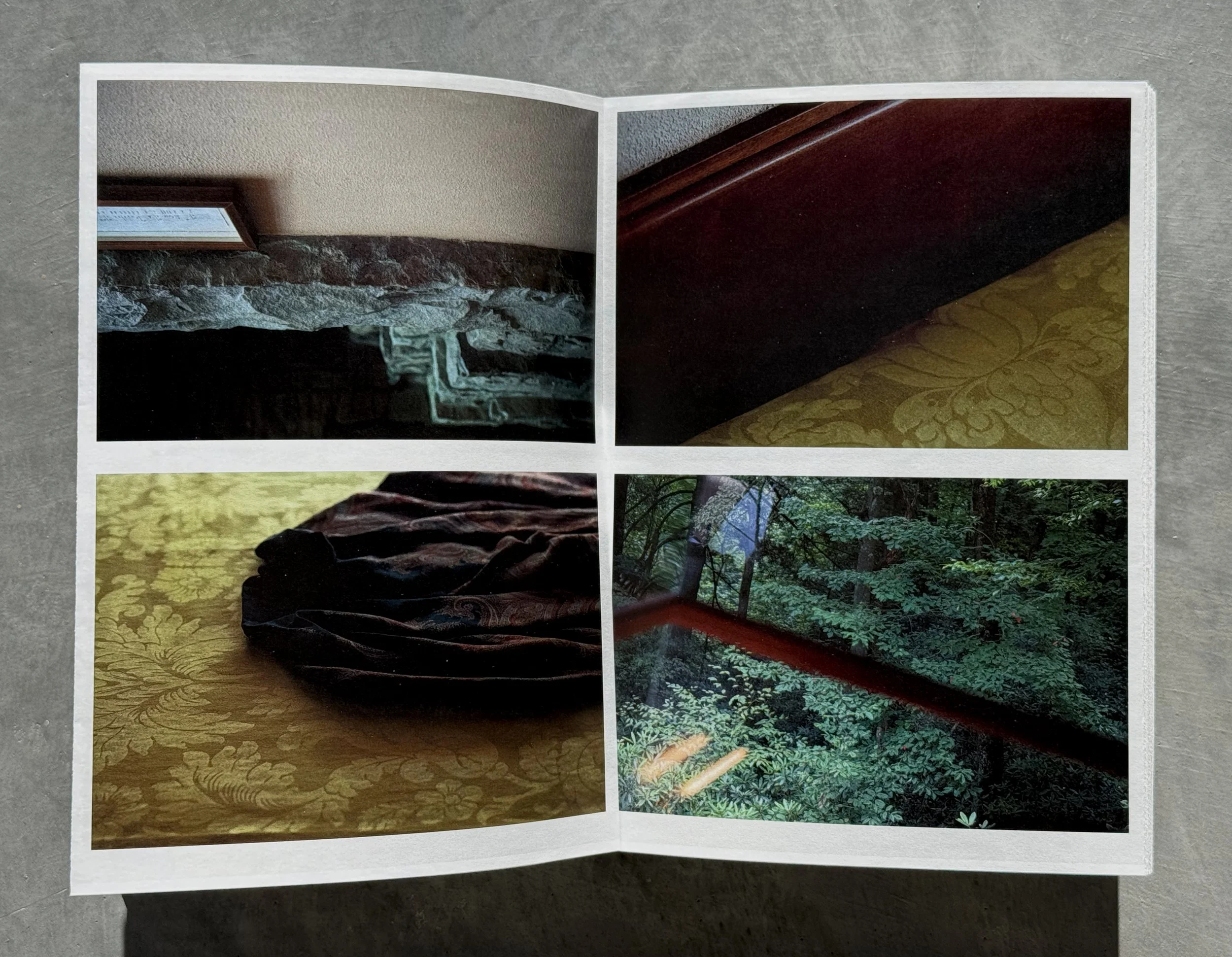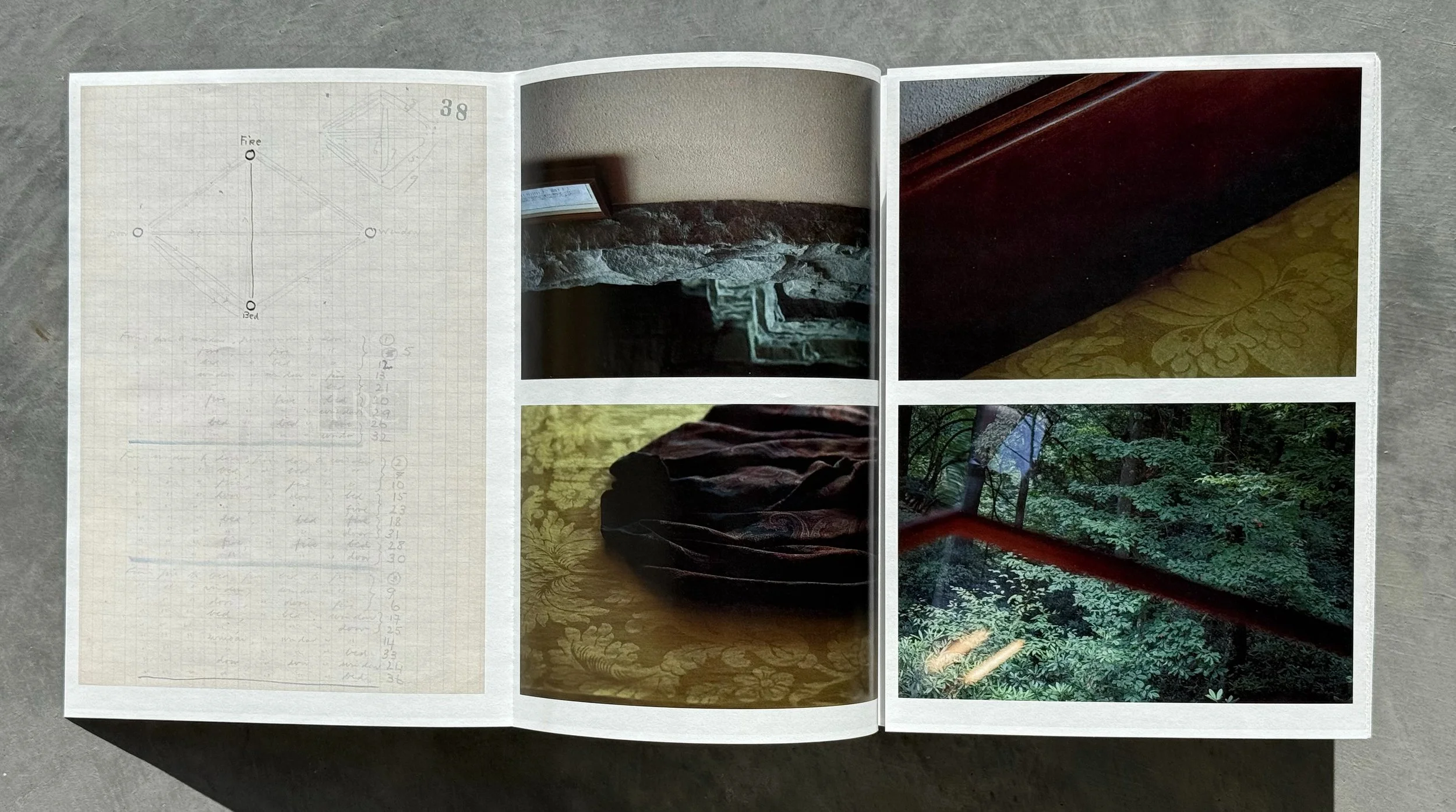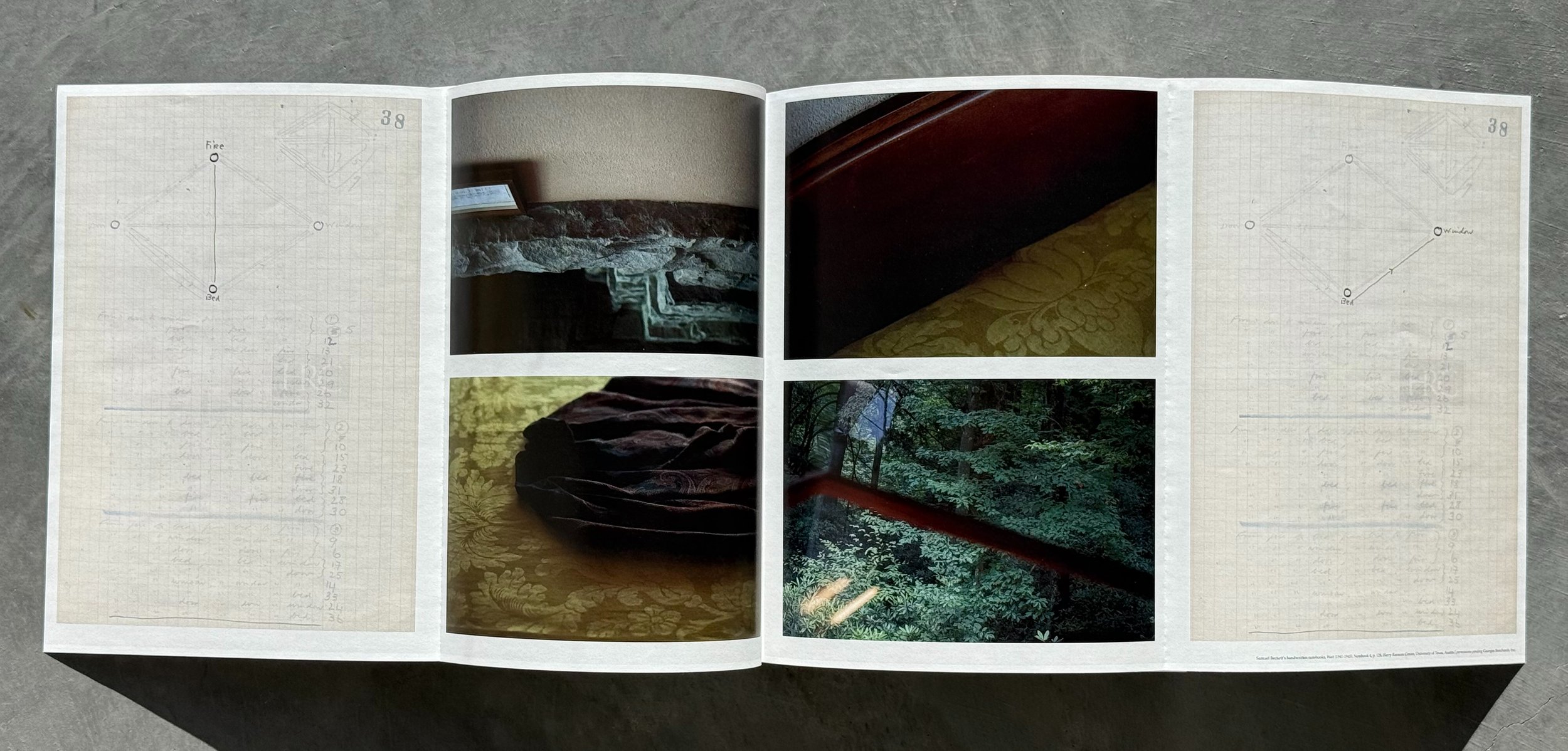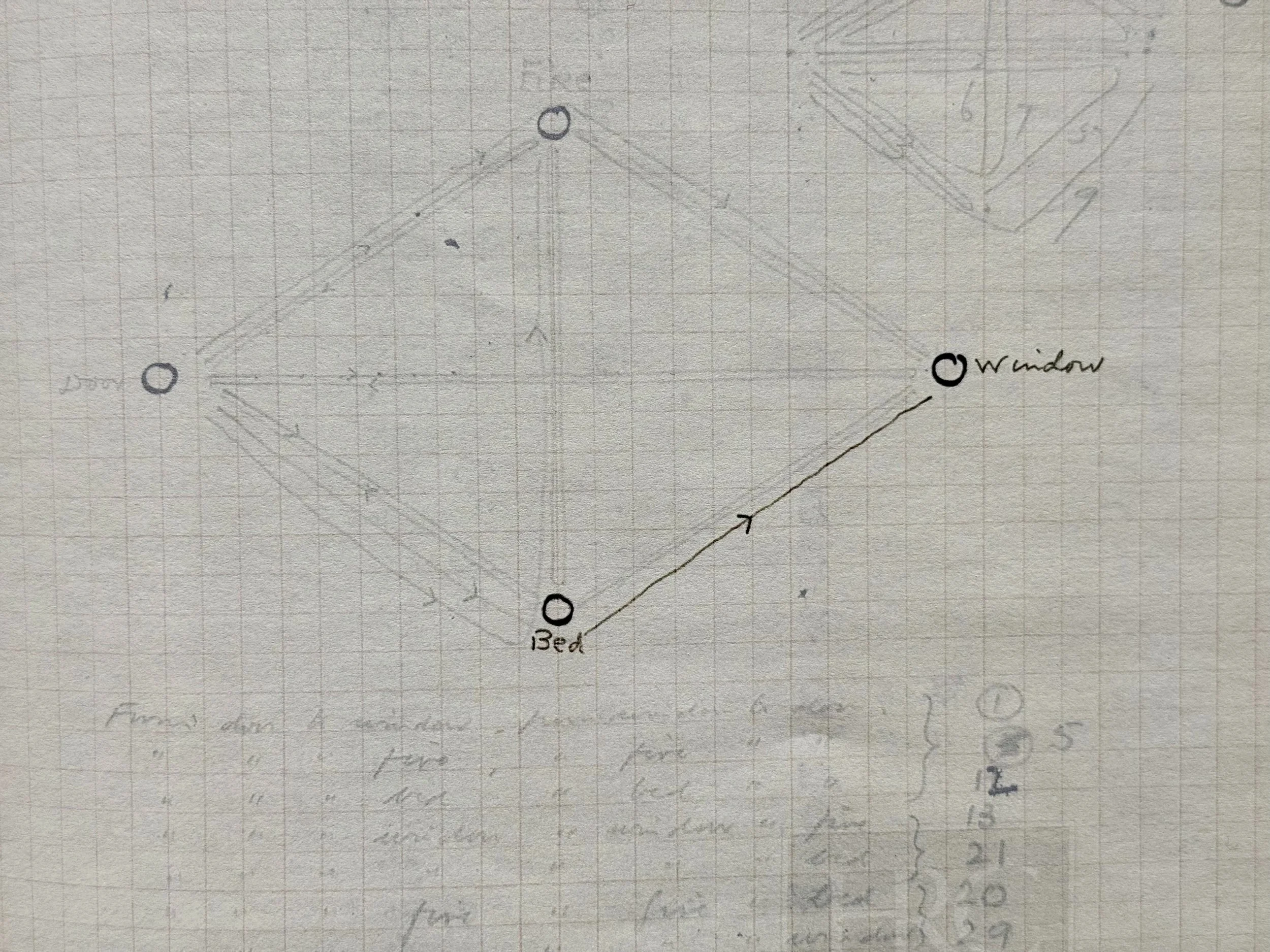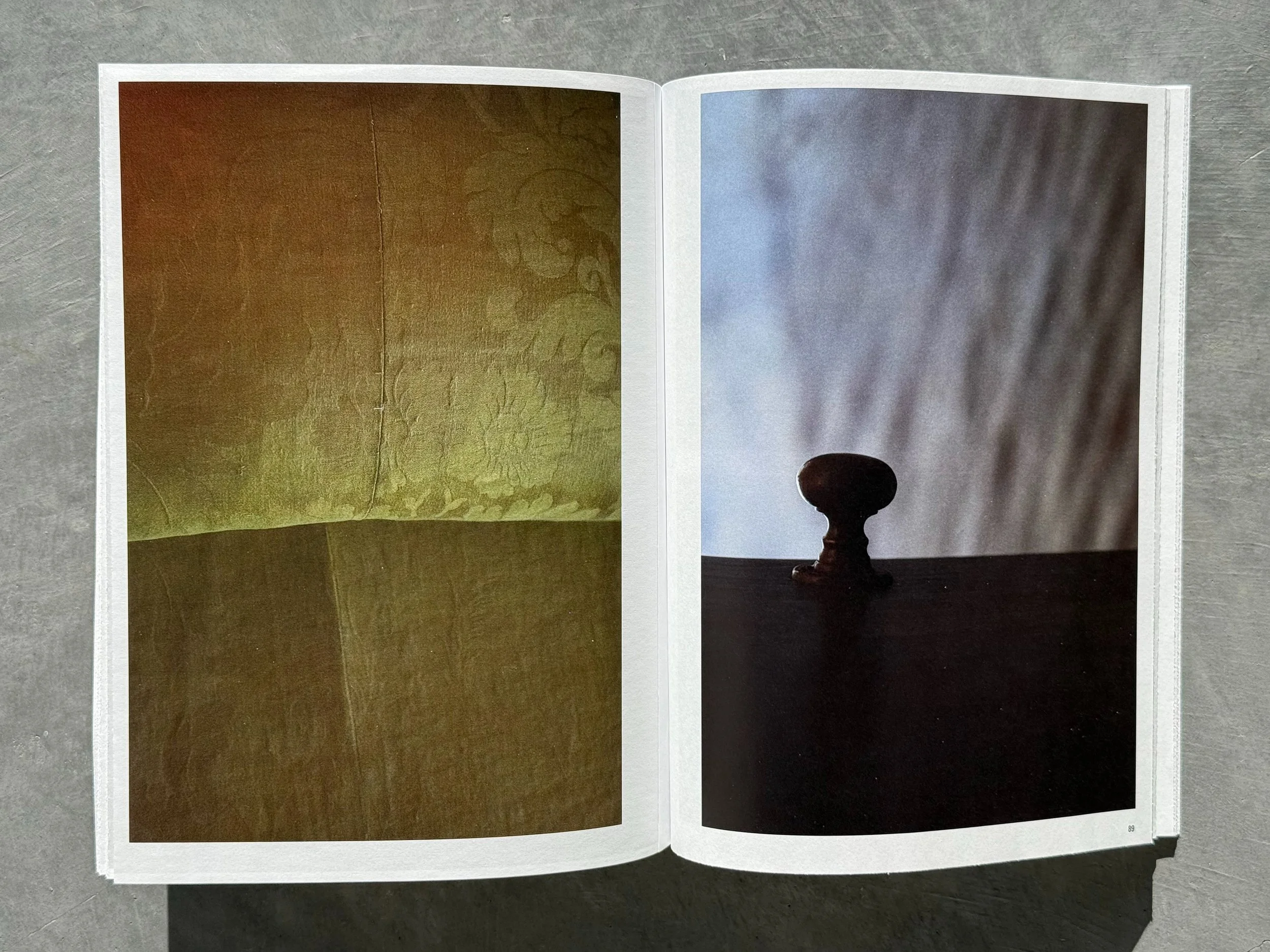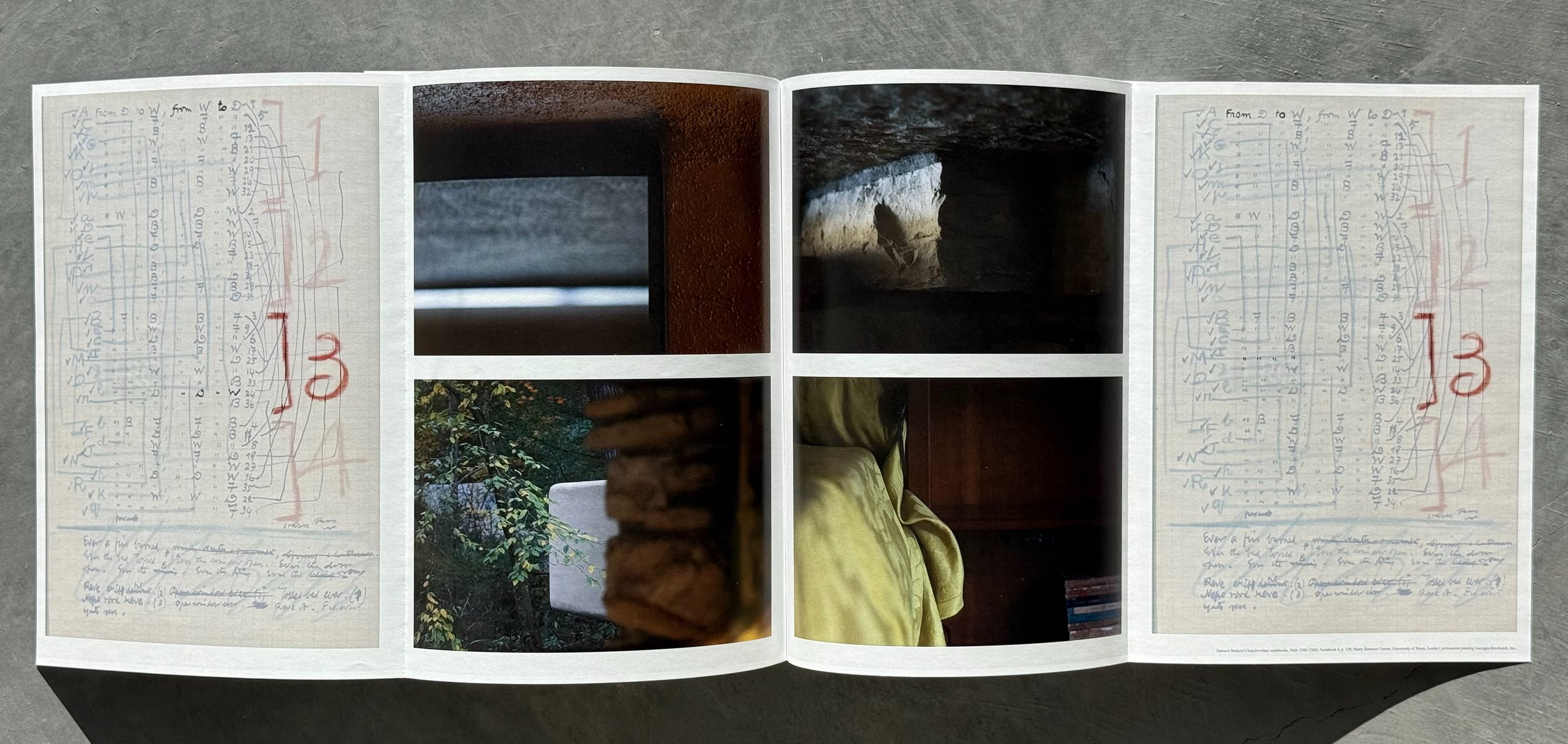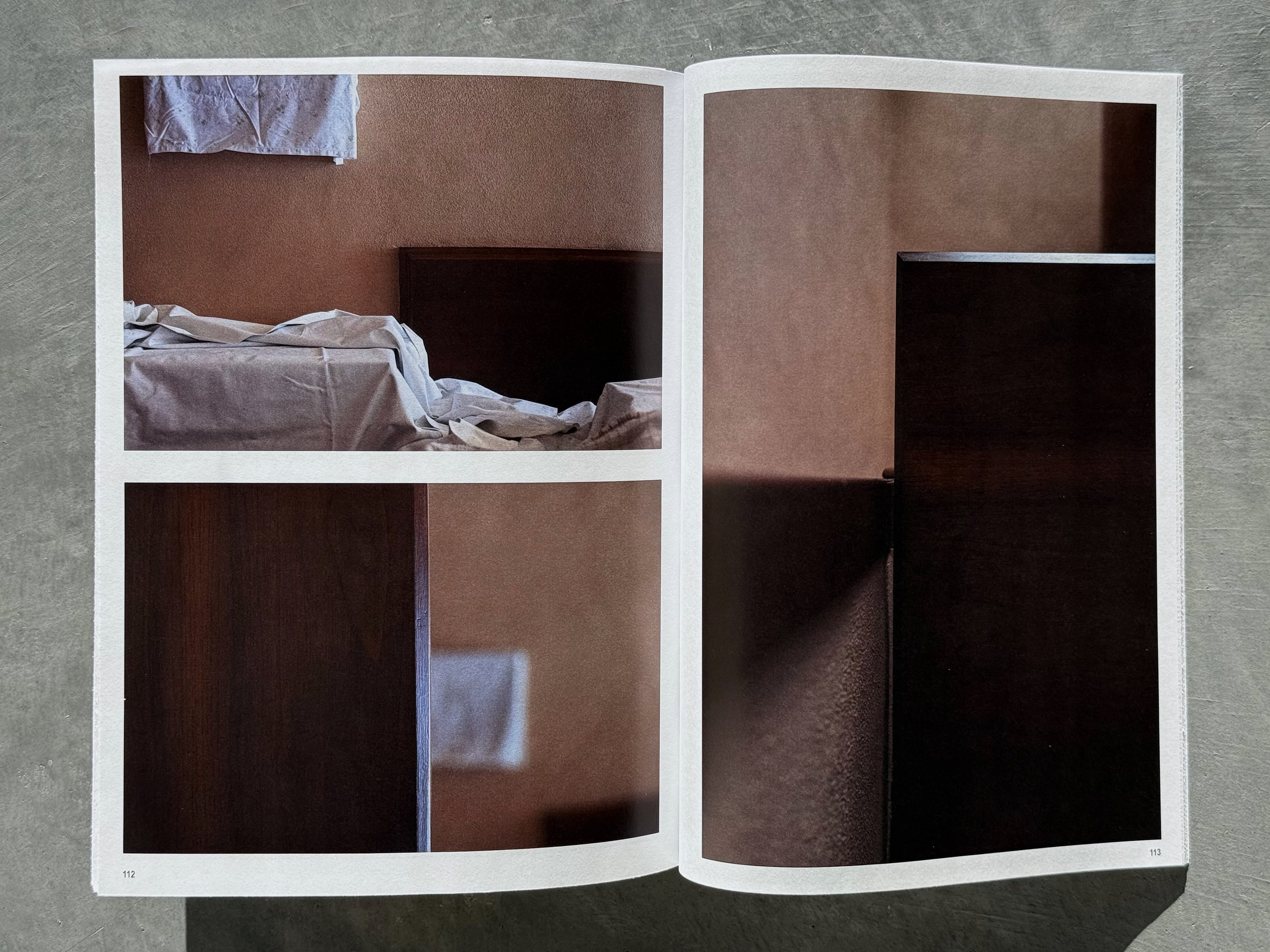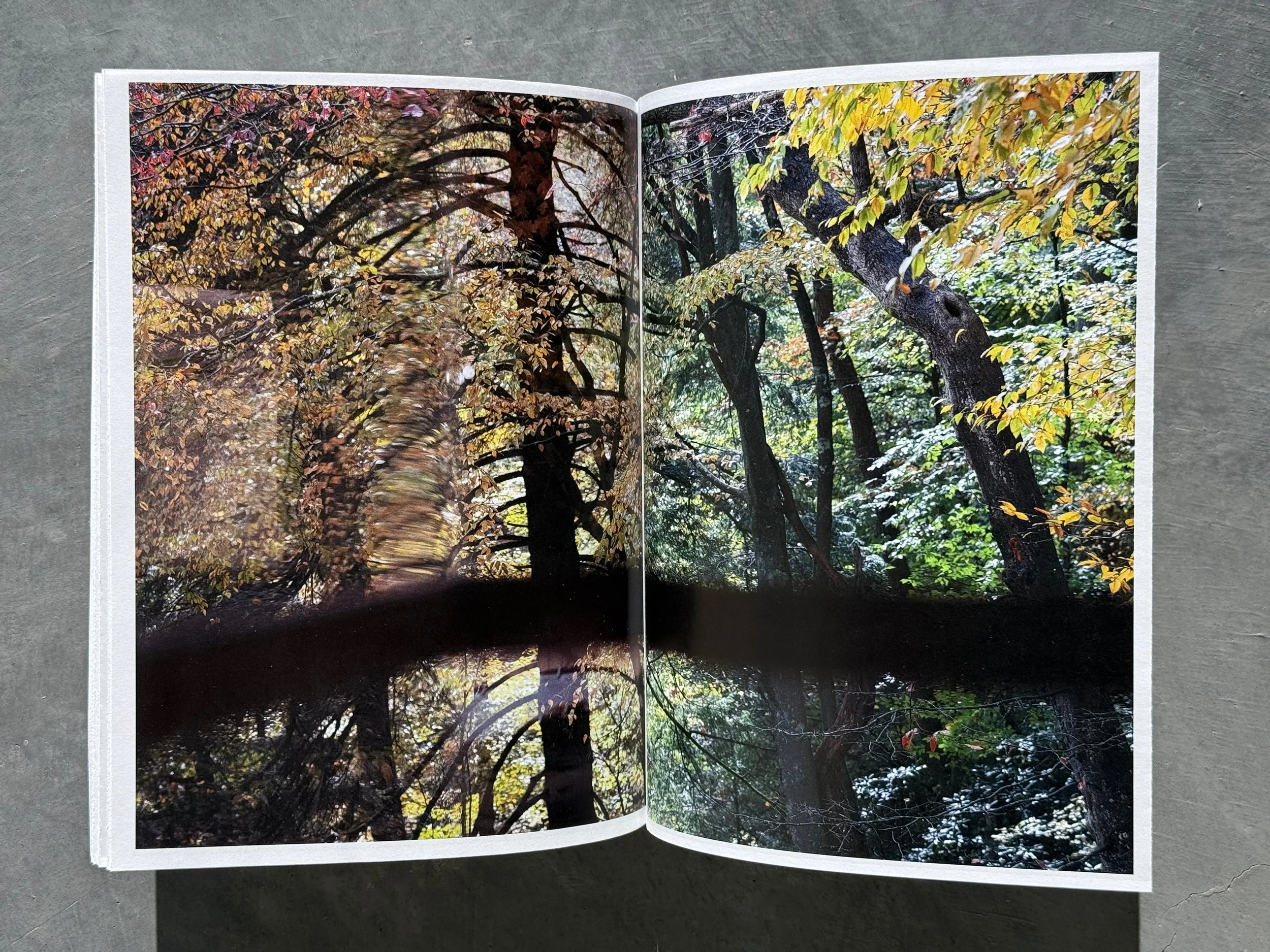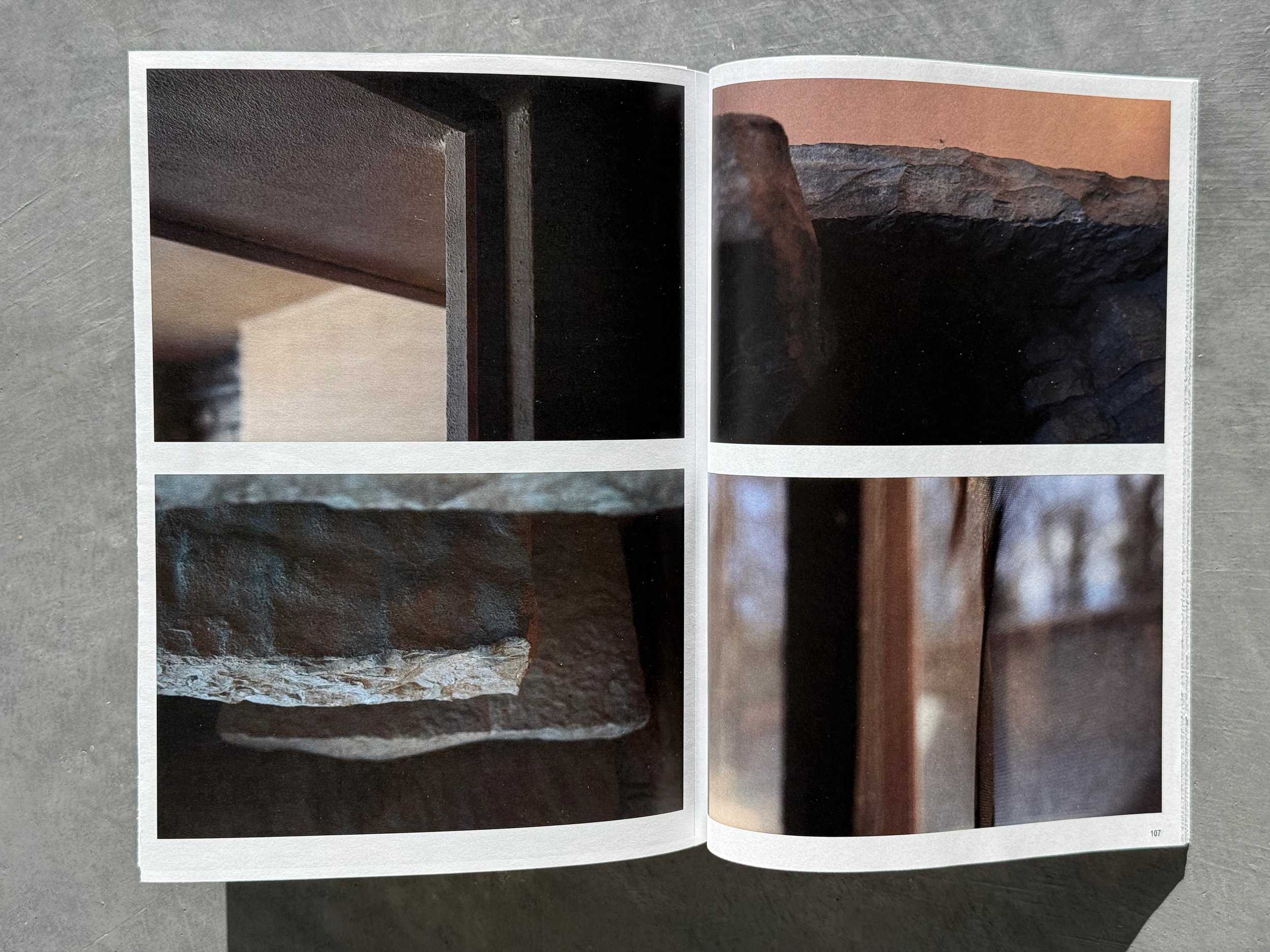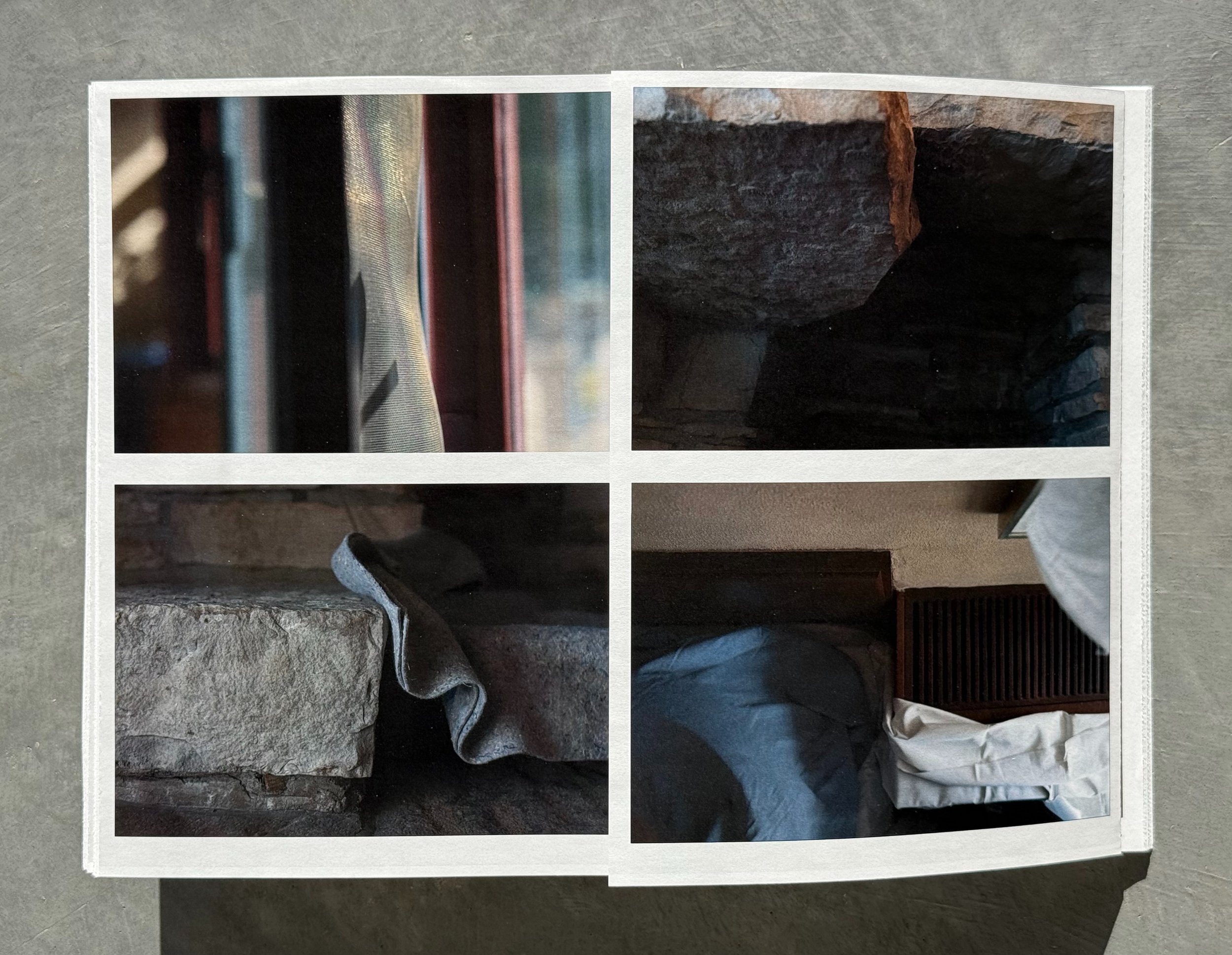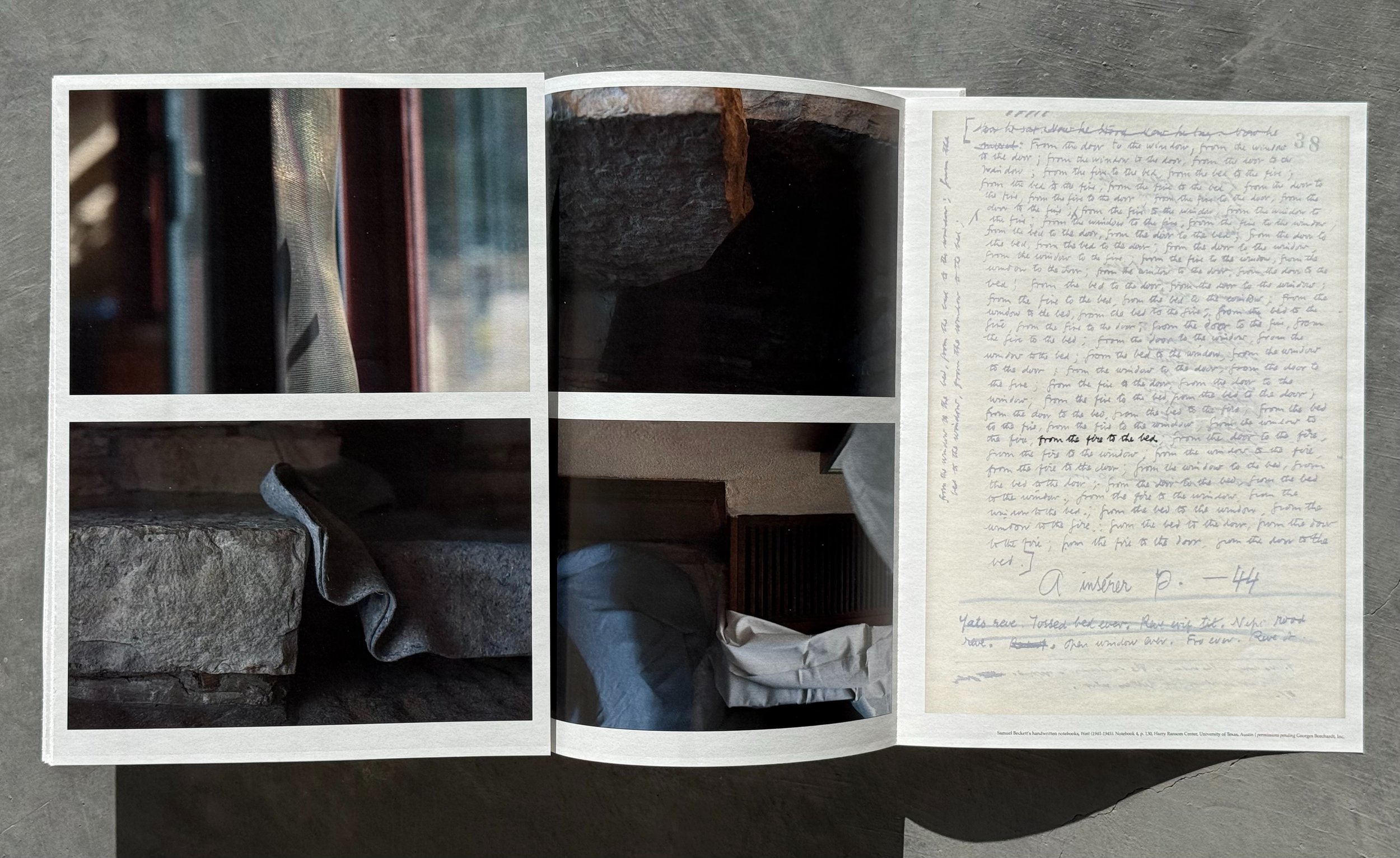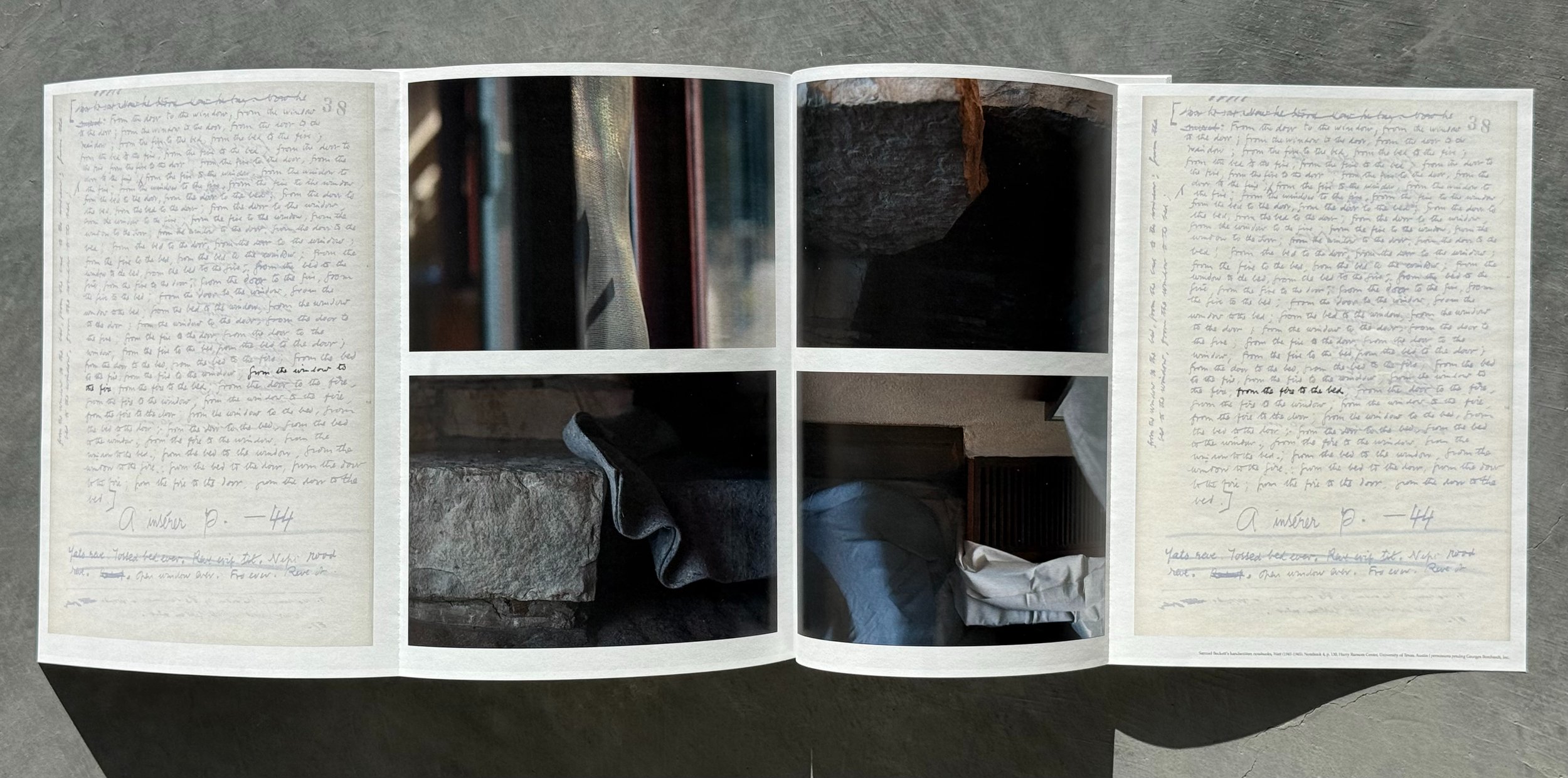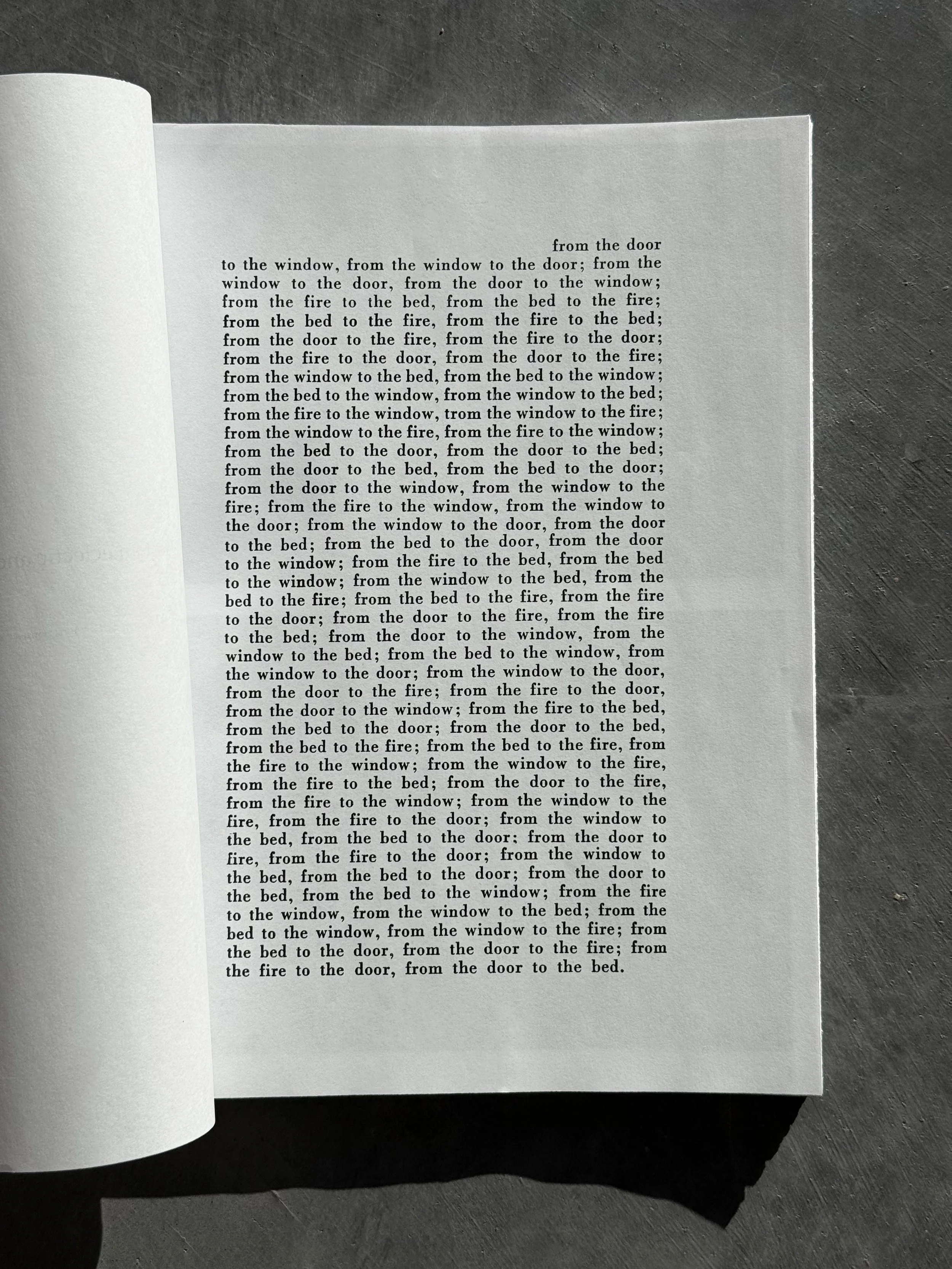Watt or Fall (—Fallingwater artist-in-residence, book, prints, installation in progress)
BOOK
~120 pages
9 in. x 12 in.
~160 color photographs
3 pages from Samuel Beckett’s handwritten notebook for Watt
1 drawing by Frank Lloyd Wright of Fallingwater bedroom
Essays by —
VIEW MOCK-UP Kate Joyce WATT OR FALL low res (PDF 19MB)
This project reimagines Frank Lloyd Wright’s iconic Fallingwater through a single passage from Samuel Beckett’s novel Watt by bridging literature and architecture, interiority and exteriority, with Wright’s insistence on living in nature and Beckett’s insistence on living in language, Kate Joyce shows how nature, architecture, and language live in photography.
Samuel Beckett’s Watt, written during World War II, is a novel centered on a home that is also a labyrinth of the mind. The plot takes place in an ordinary house whose occupants are forced in their movements to follow the near-mathematical logic of the mythical architect Daedalus, rich with claustrophobic turns devoid of reason. Fallingwater is Frank Lloyd Wright’s Vitruvian temple, exemplifying an architecture of body and nature. It is an edifice designed to continue the natural contours, materials, and spirit of the building’s site.
In "Watt or Fall", artist Kate Joyce explores the interface of Wright and Beckett— language and architecture, interiority and exteriority—by placing Watt's Daedalean labyrinth inside one room of Fallingwater’s Vitruvian temple.
Fallingwater is set amongst Appalachian mixed-mesophytic forest whose seasonality establishes an organic motion set against the stasis of architecture. While photographing the bedroom in accelerated time, Joyce also photographed the exterior seasonal landscape which seems to change in decelerated time. Moving from within a designed space to the outside evolved space, while each iterates forward through time, there emerges a life cycle within a life cycle—the fast repetitions of domestic life and the slow repetitions of seasonal light. The stone building becomes consciously tethered to the orbit of the earth.
Engaging with Fallingwater also holds personal significance for Joyce who, in 2007, joined the renowned architectural photography studio Hedrich Blessing as an apprentice, and their first female photographer to work with clients on location since their founding in 1929. In 1937 Frank Lloyd Wright commissioned Hedrich Blessing to photograph the newly completed house at Bear Run. Bill Hedrich’s photographs contributed to the building becoming a global icon. As Fallingwater approaches its 90th anniversary Joyce thought about how to approach these two monuments: one of architecture, the other of photography. The answer was “Watt”, a piece of writing Samuel Beckett claimed to have helped keep him sane through the Second World War.
For "Watt or Fall" Joyce makes part of a passage from Watt into a structural template for experiencing Fallingwater. The passage describes a man in his bedroom moving back and forth between bed, window, door, and fire. Beckett is less interested in narrative and more interested in the failure of reason, and the internal workings of mind and language. The passage is both labyrinth and Ariadne’s thread; it is the puzzle and the solution. He writes an exhaustive list of combinations of movement between these four areas of the room. It begins like this:
"Here he moved, to and fro, from the door to the window, from the window to the door; from the window to the door, from the door to the window; from the fire to the bed, from the bed to the fire; from the bed to the fire, from the fire to the bed; …"
And the passage continues for another thirty-one lines.
The main bedroom at Fallingwater, known as Liliane’s bedroom, also contains these four areas—a door, a bed, a fireplace, and windows. Joyce has photographed this bedroom as though a character in Beckett’s imagination.
Concentrated into contiguous photographs Beckett's permutational language becomes a time-lapse of the infra-ordinary within Wright's extraordinary creation. All rooms are witness to endless repetitions which language and photograph concentrate into unexpected patterns.
Though it is one of his more technical novels, Watt was a pivotal work for Beckett marking a shift in his relationship with narrative and reason. Just as Fallingwater was a pivotal work for Wright marking a late career renaissance. They are both radical experiments in their respective art forms. Each artist in “Watt or Fall”—Wright, Beckett, and Joyce—express and explore architectural space through the precarious, emotional, and materially intimate. Joyce photographs space at close range, finding details and apertures rather than sweeping views; Beckett uses condensed, claustrophobic, permutational language rather than logical narrative; Wright uses compression and release rather than grand expanse and interior spaciousness. Through these commonalities each offer non-heroic perspectives that are at the same time as disorienting as they are alluring.
This project will result in a book and an immersive installation. With support from, and in collaboration with, Fallingwater Institute and the Western Pennsylvania Conservancy.
Thank you to the Fallingwater Institute for this gift of time and space, support and creative openness.
https://fallingwater.org/fallingwater-institute/artist-scholar-in-residence/
EXTRA MATERIAL
Various editions of Watt
Written between 1941—1945
First published by Olympia Press, Paris, 1953
Grove Press, New York, 1959
The house at La Croix in Roussillon d’Art where Samuel Beckett and his partner Suzanne Dechevaux-Dumesnil lived after their escape from the Gestapo, and where Beckett continued and finished writing Watt.
Watt was written by hand and fills seven notebooks. This is the cover of Notebook IV in which the passage I am interested in appears. On those pages Beckett works out a permutational color-coded table in order to derive all the combinations and order between bed, window, door, and fire before writing the final passage in sentence form.
The notebooks and the subsequent typed manuscript are housed at the Harry Ransom Humanities Research Center at the University of Texas, Austin.
The above digital reproduction is for research purposes exclusively.
Any further usage rights must be obtained from the copyright holder.
Watt © The Estate of Samuel Beckett, Grove Press, 1959
Some of my notes for photographing all the combinations of door, window, fire, bed in the bedroom at Fallingwater.
Views from the security camera in Liliane’s bedroom while photographing during my summer session in residency at Fallingwater. 2024
My studio with a preliminary mock-up for a wall installation of Watt or Fall
EMAIL studio (at) kate-joyce.com
STUDIO Santa Fe, New Mexico
INSTGRM _kate_joyce
All rights reserved unless otherwise specified. Kate Joyce 2025
